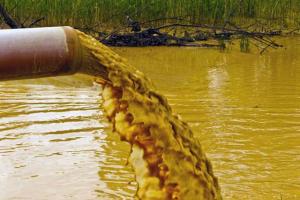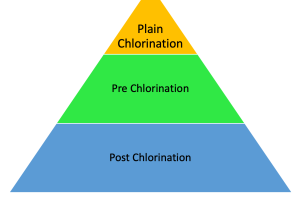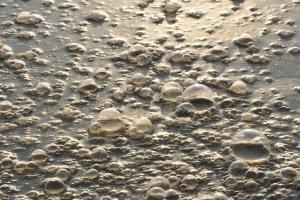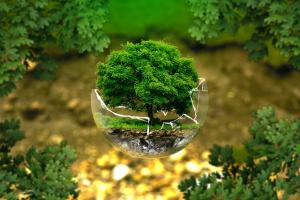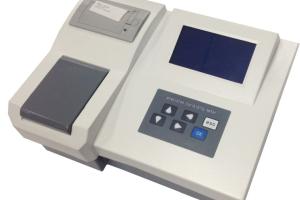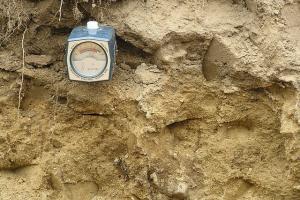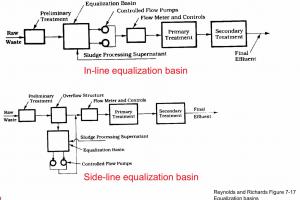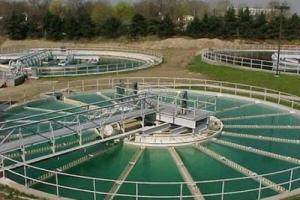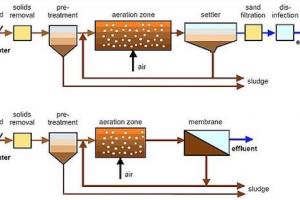Algal Growth & Surface Water Quality
Definition:
Algae are photosynthetic organisms that occur in most habitats. They vary from small, single-celled forms to complex multi-cellular forms, such as the giant helps that grow to 65 meters in length. Algae are a large group of complex-celled photosynthetic organisms.
1. Green Algae:
The green algae (singular: green alga) are the large group of algae from which the embryophytes (higher plants) emerged.As such, they form a paraphyletic group, although the group including both green algae and embryophytes is monophyletic (and often just known as kingdom Plantae).
The green algae include unicellular and multicellular flagellates. There are about 6,000 species of green algae. Many species live most of their lives as single cells, while other species form colonies or long filaments
2. Algae in Pakistan
2.1. The Algae Attack
Algae are the green carpet that forms layer on the top of ponds or swimming pools. It may be long strands of seaweed, sometimes used for fertilizer or food. Algae may be easy to see, but appearances can be deceiving. There's an ongoing problem with algae that has enforced the scientists from the time when they started trying to organize and classify the natural world. Different types of algae may look similar, but they're actually very different organisms.
Algae may range in color from red to brown to yellow to green. Some types, like phytoplankton, are tiny and visible only under a microscope. Others types, like giant sea kelp, can grow to over 100 feet. Some types of algae are unicellular, which means the entire organism is made of one cell; others are multicellular.Strangest of all, there are some types of algae that sometimes behave like plants and sometimes behave like animals. Like a plant, these algae use photosynthesis to make food. (During photosynthesis, plants or algae use light from the sun to turn carbon dioxide and water into oxygen and food.) But when sunlight is not available, these organisms can still survive by eating other organisms including other algae.
3. Conditions necessary for Algal Growth:
3.a. Light
As with all plants, algae photosynthesize, i.e. they convert carbon dioxide into organic compounds, especially sugars, using the energy from light.
3.b. PH
The pH range for most cultured algal species is between 7 and 9, with the optimum range being 8.2-8.7.
3.c. Temperature
The optimal temperature for algal growth is generally between 20 and 24°C. Temperatures lower than 16°C will slow down growth, whereas those higher than 35°are lethal for a number of species.
3.d. Salinity
Marine algae are extremely tolerant to changes in salinity. Salinity of 20-24 g/l have been found to be optimal.
4. Conditions in Pakistan promoting Algal Growth
- Pakistan lies between 24° and 37° north latitudes and 61° and 75° east longitudes. More than 60 percent area of Pakistan is arid and receives less than 250mm rainfall per annual. About 20 percent area is semi-arid where rainfall varies between 250-400 mm per annum.
- In these zones temperature rises steeply during summer and drops sharply in winter giving rise to great variations in temperature.
- Subsequently the arid and semi-arid parts of the country are characterized by low precipitation, extreme temperature and low humidity. These conditions are inhospitable to good plant growth.
- There are frequent droughts and the plant growth fluctuates greatly with precipitation.
5. Algae as water pollutant
- Filamentous algae form thick floating mats on the water surface. Such excessive algal growth is called water bloom.
- This bloom stops the light to deeper layers of water body and thus inhibits decomposition of organic matter in that water body.
- The algae further add a large amount of organic matter after death and decay to the water body which is not decomposed quickly due to prevailing conditions in that water body. Some algal blooms, otherwise called "nuisance algae" or "harmful algal blooms", are toxic to plants and animals
- This causes serious water pollution
6. How to control Algae
6.1. Treatment and Methods
Below are the most common treatments and methods for controlling algae. Each treatment method has its pros and cons. some methods may not work well with some special type of fish, plants, or other aquatic life.
6.1.1. Barley Straw
Barley straw is an excellent way to stop the growth of algae. It is cost effective and .besides this it has no toxic effect on aquatic life.
6.1.2. Ultraviolet Sterilizers
Ultraviolet sterilizers are very important for controlling algae, it should be used according to need .excessive use is harmful for fish. UV sterilizers are sometimes referred to as clarifiers and are an important water treatment for killing free-floating bacteria, suspended algae, fungi, mold spores, viruses, and other parasites. The disadvantage of UV sterilizers is that the algae must pass through the light; any attached algae will not be killed.
6.1.3. Skimmers and Biological Filters
If pond is not too large, a skimmer can be helpful trapping and filter debris from the water. Debris acts as nutrient for growth of algae. Skimmers aren't the best method for controlling algae, they can provide a tiny bit of assistance. Skimmers must also be cleaned out regularly so water can pass through. Biological filters are not so much effective in controlling algal growth.
6.2. Chemical Treatments & Water Treatments
6.2.1. Algaecides
It is recommended that you avoid chemical treatments such as algaecides. Because besides preventing algal growth, these treatments have many harmful effects on aquatic life. Many of them can be harmful to the environment as well.
6.2.2. Dyes
Dyes are water treatments that shade the water. The shading stops vital sunlight, which the algae must have for photosynthesis.
6.2.3. Bacterial and Enzyme Water Treatments
These are most popular and effective type of treatments. These treatments can control wide can control water pH & sludge to remove ammonia and excess nitrates. These treatments control algae very well and are safe for fish, aquatic plants, and also for the environment.
6.2.4. Natural Controls
6.2.4.a. By adding Plants
Adding plants to water is a great natural way to help control algae. Aquatic plants can control algae utilizing their nutrients needed for their growth. They can also help shade the water therefore removing the required sunlight which the algae need for photosynthesis.
6.2.4.b. Algae Eating Fish
Algae eating fish help to clean the water simply by eating the algae growing on the bottom and sides of the pond. Tadpoles and snails are quite helpful.




